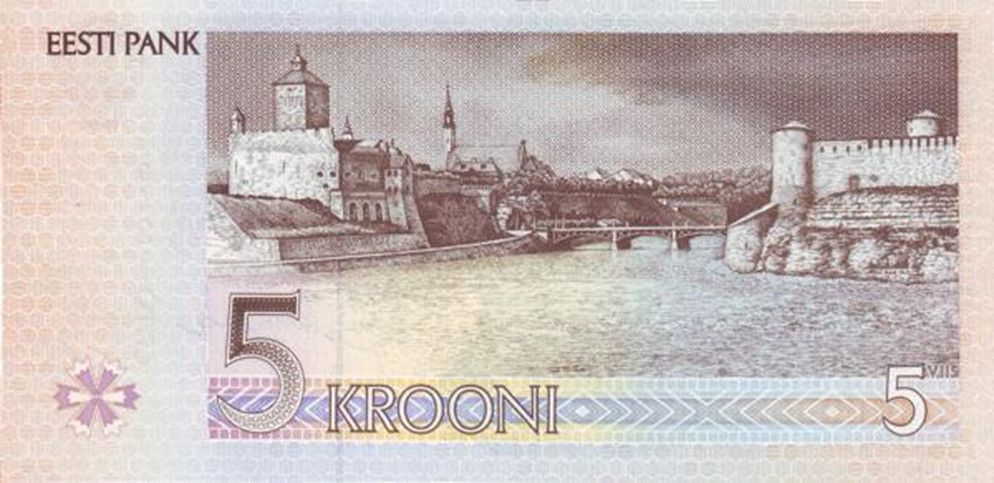Estonia – The 5 Krooni pride
A quaint bridge, over a serene river. Flanked by Medieval age castles on either banks. Looks like a typical setup in a peaceful European town.
Here’s a photograph of the same place taken recently . Be inquisitive, observe carefully. There’s much more ,than what meets the eye at the first glance

Image courtesy : My friend Sameer Datye who visited this place and ensured the visibility of the two flags
The Teutonic Hermann castle (Narva Castle) on the left, hoists the Estonian flag while on the right the Ivangorod Fortress hoists the Russian flag.
The Narva river separates the two nations – Estonia and Russia and forms the international border. The bridge is a border crossing for people and vehicles between the two countries.
So what’s the story?
Estonia is a country at the north eastern tip of contiguous part of the continent of Europe. Along with Latvia and Lithuania it forms a group of countries popularly known as Baltic states, bordering with Baltic sea on the west. Estonia is just about 18 nautical miles and 2 hrs ferry ride away from Helsinki Finland

NormanEinstein, CC BY-SA 3.0 http://creativecommons.org/licenses/by-sa/3.0/, via Wikimedia Commons
The Baltic states are now part of European Union and also Eurozone – having Euro as their official currency , common to 19 others in the European Union
Before 1990, all the Baltic states including Estonia were part of USSR – also known as Soviet Union, the largest country in the world at that time. USSR as a country, was a federal union of 15 different Republics formed in 1922 after World War 1. It lasted until 1991 when it finally broke down into independent countries formed from the internal republics
Estonia was one of the first republics to declare internal state sovereignty within USSR in 1988 and finally gaining full independence in 1991.
Since then Estonia has been a worthy example of rapid development. Implementing radical economic reforms. Estonia introduced its own national currency the Kroon in 1992. She was welcomed into European Union in 2004, joined the Eurozone and subsequently adopted Euro as its currency in 2011.
Kroon currency stands testimony to Estonia’s independence, rapid development, economic growth as much as for its culture and reforms.
Estonia celebrates its independence and sovereignty, with the picture of Narva river and the Hermann castle on the Estonian side on a 5 Krooni currency note. A Viewing Platform constructed on the Narva river promenade, offers visitors the exact same mesmerizing view, as that on the banknote.

Although called as “Five Kroon View” it is certainly worth a billion !





